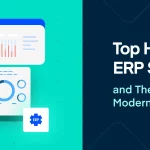Back in the days, being a successful business owner took fewer efforts than the ones being exerted these days by the entrepreneurs. That’s because, the number of new startups is burgeoning at an unprecedented pace, eventually, turning the game violently competitive for each other.
A recent research by small business trends shows that 90% of startups fail.
Failory.com
In this unsteady and shaky competition, you can not live high on hog unless you plan well from all along. To this end, Break Even Analysis is one of the most important components among all the other planning stuff.
In today’s article, I will not only walk you through the importance of the Break-Even Analysis but also show you the ways to calculate it properly.
Why Do You Need to Use the Break-Even Analysis for Your Business

If you are yet to consider the importance of Break-Even Analysis for your business then go through these benefits.
Launching a New Product
If you wish to roll out a new product for your existing business, still you need to analyze the Break-Even Point in order to scrutinize the viability of that product.
Switching The Business Model
In the case of changing your business model, you should analyze the Break-Even. For example, you may change your retail business model to a wholesale business model. In this case, you should analyze the Break-Even to figure out how much amount is needed to change the selling price of the products.
Starting a New Business
If you are going to start a new business without analyzing the Break-Even Point you may confront some surprising expenses down the line. To reduce these surprising expenses, you can use the Break-Even Analysis method.
Setting Concrete Sales Goals
You can never set concrete sales goals unless you become able to calculate the expenses thoroughly. Once you become able to calculate the expenses you can use the Break-Even Analysis to estimate the minimum amount of sales volume you want to set.
Make Informed Decisions
Many entrepreneurs take their business decisions relying upon their gut instincts. But experts always do agree that making business decisions based on emotional feelings is never proved to be wise. This is why you need to make your valuable business decisions with respect to the facts and data harnessing the power of Break-Even Analysis.
Checking the Viability of Your Business Plan
Funding your business requires the viability of your business plan. Each time you want to fund your business, you need to convince your lenders that your plan is feasible with the help of the Break-Even Analysis.
Optimized Pricing
The Break-Even Point is a great tool to price your products better so as to ensure the maximum profit. This will help you stay safe in the competition by charging your customers with the most optimized price.
Cover Fixed Costs
Doing a Break-Even analysis will help you find the equilibrium point that will guide you to recover all the fixed costs associated with your business.
What Break-Even Analysis Is & What Its Components Are
In the case you did not know what the Break-Even Analysis is – It’s basically a financial tool that allows you to determine at which point of your company or business will be able to start earning the profit.
Above all, the Break-Even Point is the neutral point at which your company makes neither profit nor face loss by selling certain units of products or amount of services. Finding this break-even point is imperative especially if you want to recover all your costs, particularly, fixed costs.
Moving forward, companies having a low amount of fixed costs is likely to beget a low break-even point of sale. To cite an example, if your fixed cost is $0, then you can have the break-even point right after the very first sale!
How to Calculate Break-Even Analysis
To learn how to calculate the Break-Even point or the Break-Even Analysis you must know these two terms from the beginning:
Fixed Costs or Overhead Costs
Fixed costs, also known as the overhead costs are directly connected to the level of production but it does not relate to the quantity of production. These types of costs remain the same no matter how many sales you make or how much revenue your business brings forth.
These types of costs happen right after you set off your business activities. Generally, the fixed costs of business include, but are not limited to, the following items:
- Interests
- Amortizations
- Utilities
- Taxes
- Salaries
- Rents
- Depreciations
- Labor costs
- Energy costs
Variable Costs
Variable costs are such business expenses as are directly increase or decrease with the production volume. Meaning that the higher your production volume is, the more the variable cost will rise and vice versa.
The variable costs include but are not limited to the following items:
- Raw Materials
- Packaging Costs
- Fuel
To calculate the average variable cost or costs per unit, you can use this equation:
Variable Costs per unit or AVC = TVC/Q
[Here, TVC = Total Variable Cost,
AVC = Average Variable Cost,
and Q= Quantity]
To find out TVC use the following equation:
TVC = TC – TFC
[Here, TC = Total Cost,
and TFC = Total Fixed Cost]
Calculation of Break-Even Analysis
Let’s go over the calculation process of figuring out the Break-Even Analysis lickety-split.
First off, for the Break-Even Analysis, you have to determine the Contribution Per Unit. And the contribution per unit is strongly driven by two factors – One is the Selling Price Per Unit and the other is the Variable Cost Per Unit.
Here is the formula for the Contribution Per Unit:
Contribution Per Unit = Selling Price Per Unit – Variable Cost Per Unit.
And here is the Break-Even Point or BEP formula:
Break-Even Point (BEP) in quantity or in unit= FC / Contribution Per Unit or FC/(P-VC).
[Here, FC =Fixed Costs,
P = the selling (or average) price per unit,
and VC = Variable Costs per unit.]
Example of Break-Even Analysis
Assume that Ben is the accountant of company A that sells soap. Now, he estimated that the fixed costs of the company consist of Lease, Executive Salaries, and the Property Taxes which amount to $100000.
And the variable costs in connection with producing a unit of soap is $3. Finally, a unit of Soap is sold at a premium price of $7.
Now, the Break-Even Point in quantity for the company A is = FC / Contribution Per Unit = FC / (P-VC) = 100000 / (7-3) = 25000 (in units).
So, company A must sell 25000 units of soap worth $175000 to break even or to redeem its all given expenditures: variable costs, fixed costs and selling price of the product.
By using the above method Ben can determine the Break-Even Point for his company A.
And here is the Break-Even Analysis Graph for the above example:

Bonus Tips: Figuring out the Break-Even Analysis from an ERP Tool
If you are maintaining an ERP software for your business, you will be able to find out the components of the Break-Even Analysis at your disposal.
For example, you can get to know the Contribution Per Unit by observing the fixed costs from the ledger report. As I mentioned fixed costs usually consists of the followings:
- Interests
- Amortizations
- Utilities
- Taxes
- Salaries
- Rents
- Depreciations
- Labor costs
- Energy costs
With an ERP having a Trial Balance feature you can get to see these costs effortlessly. To cite an example, here are two items (that is taxes and salary expense you can notice on the following screenshot:

Here are the Utilities and Property tax from the trial balance:

See? No mumbo jumbo! You can find all the automatically synched and updated items related to fixed costs from an accounting solution lightning fast.
Over to You
The factors to find out the Break-Even Point requires a correct and updated financial data so that you can calculate it accurately. Maintaining this data with manual intervention may lead you to some unexpected error. Thus, we recommend you use an Accounting solution coupled with the functionalities of a financial tool for your business.
We hope that this article will help you all the way to figure out the Break-Even Analysis on your own. What do you think about Break-Even Analysis? Let us know down there in the comment section.








